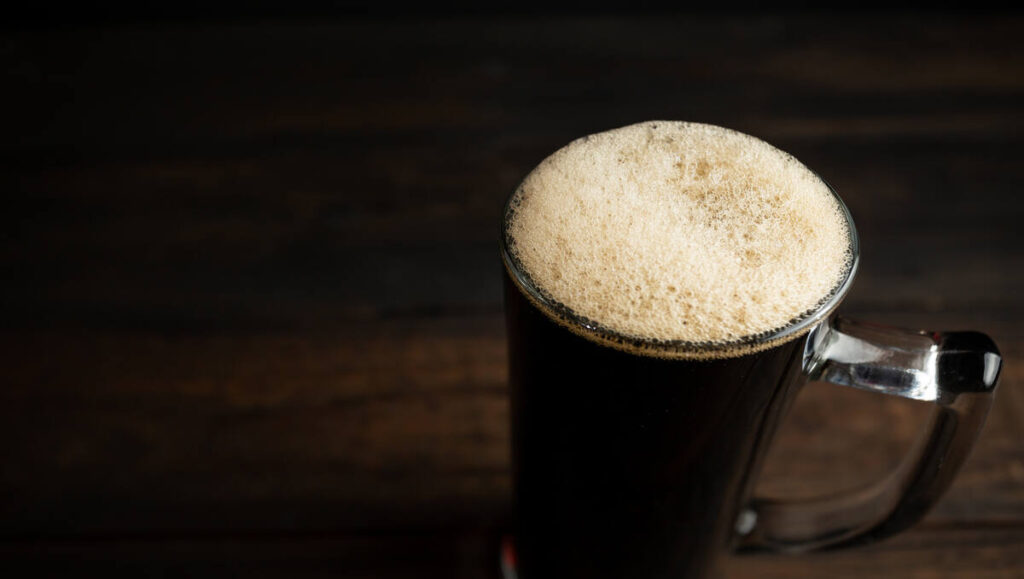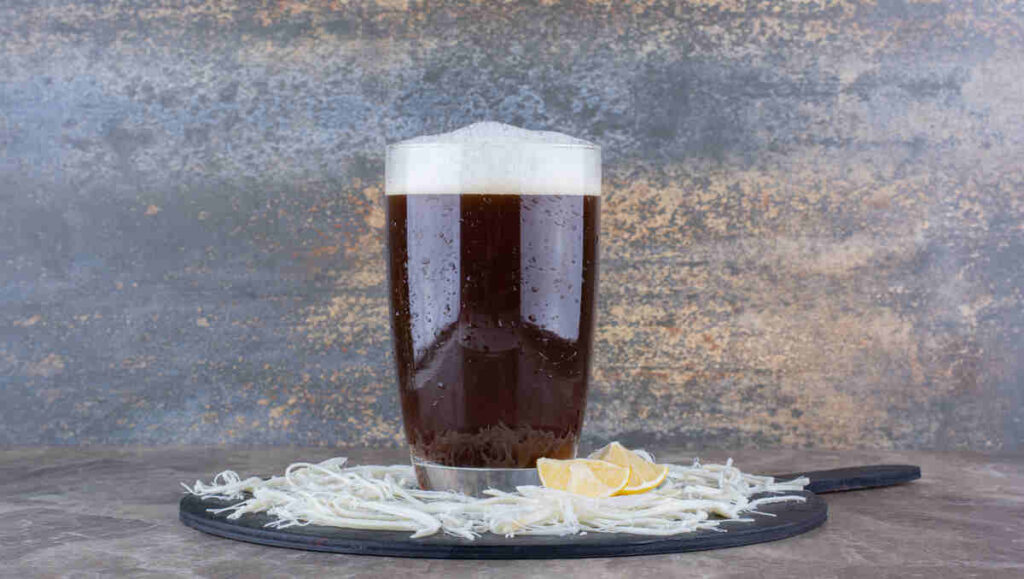Introduction
There’s nothing quite like a smooth, creamy, and slightly sweet Milk Stout Recipe. Unlike regular stouts, which can be bitter and dry, milk stout is known for its silky texture and subtle sweetness, making it a favorite among craft beer lovers.
If you’ve ever wanted to brew your own milk stout at home, this guide will take you through a step-by-step process to create a rich, flavorful, and well-balanced stout. Whether you’re a beginner homebrewer or an experienced enthusiast, this recipe will help you craft a delicious batch of homemade milk stout.

What is Milk Stout Recipe?
Milk Stout Recipe, also known as sweet stout, is a type of dark beer that contains lactose (milk sugar). Unlike traditional stouts, which are typically dry and bitter, milk stouts have a creamy texture and a slight sweetness, thanks to the lactose.
Key Characteristics of Milk Stout
- Dark, rich color (deep brown to black)
- Creamy, smooth mouthfeel
- Sweet, slightly caramel-like taste
- Hints of coffee, chocolate, and roasted malt
- Low to moderate bitterness
Lactose is unfermentable by beer yeast, which means it remains in the final product, giving milk stout its signature sweetness and creamy body.
The Origin of Milk Stout Recipe
Milk Stout Recipe has its roots in England in the 19th century, when brewers experimented with adding lactose to traditional stouts.
Initially, it was marketed as a “nutritious” beer, believed to provide energy and sustenance. While we now know that beer isn’t exactly a health drink, milk stout remains a deliciously smooth and satisfying beverage.
Popular examples of milk stout include:
- Left Hand Brewing’s Milk Stout (USA)
- Lancaster Milk Stout (USA)
- Mackeson’s Stout (UK)
Essential Ingredients for Milk Stout Recipe
| Ingredient | Quantity | Purpose |
| Pale malt | 8 lbs | Base malt for body and sugars |
| Chocolate malt | 1 lb | Adds deep color and chocolate notes |
| Roasted barley | 1 lb | Provides roasted coffee-like flavor |
| Lactose (milk sugar) | 1 lb | Adds sweetness and creamy texture |
| Hops (Fuggles or East Kent Goldings) | 1 oz | Provides mild bitterness |
| Beer yeast (English Ale yeast) | 1 packet | Ferments the beer |
| Water | 5 gallons | Base liquid for brewing |

Necessary Equipment for Home Brewing
- Brew kettle (5-gallon minimum) – For boiling the ingredients
- Fermenter (with airlock) – For fermentation
- Grain bag – For steeping grains
- Thermometer – To monitor brewing temperatures
- Hydrometer – To measure alcohol content
- Bottling bucket & bottles – For packaging your beer
- Sanitizer – To ensure a clean brewing environment
Step-by-Step Preparation of Milk Stout Recipe
1. Heat the Water and Steep the Grains
- Heat 3 gallons of water to 150°F (65°C).
- Place chocolate malt and roasted barley in a grain bag and steep for 30 minutes.
- Remove the grains and discard them.
2. Bring to a Boil and Add Hops
- Bring the liquid (wort) to a rolling boil.
- Add the hops and boil for 60 minutes, stirring occasionally.
3. Add the Lactose Sugar
- In the last 15 minutes of the boil, add lactose sugar and stir well.
4. Cool the Wort and Transfer to Fermenter
- Quickly cool the wort to 70°F (21°C) using an ice bath or wort chiller.
- Transfer the cooled wort to a sanitized fermenter.
5. Pitch the Yeast and Ferment
- Add the English Ale yeast to the fermenter.
- Seal the fermenter with an airlock and place it in a cool, dark space.
- Allow fermentation to occur for 1-2 weeks at 65-70°F (18-21°C).
6. Bottle and Carbonate
- Once fermentation is complete, transfer the beer to a bottling bucket.
- Add priming sugar and bottle the beer.
- Let the bottles carbonate for 2 weeks before drinking.
Health Benefits of Milk Stout Recipe
| Benefit | Why It’s Good |
| Rich in Antioxidants | Protects against cell damage |
| Contains Probiotics | Supports gut health |
| Moderate Alcohol | May have cardiovascular benefits |
| Nutrient-Dense | Contains iron, B vitamins, and fiber |
Common Brewing Mistakes to Avoid
- Not sanitizing equipment properly – Can lead to bacterial contamination.
- Overheating grains – Can cause unwanted bitterness.
- Not cooling wort fast enough – Can result in off-flavors.
Best Ways to Serve Milk Stout
- In a tulip glass – Enhances aroma and flavor.
- With hearty meals – Pairs well with BBQ, steak, and rich desserts.
- At slightly warmer temperatures (50-55°F) – Enhances creamy mouthfeel.
Calories and Nutritional Information
| Nutrient | Per 12 oz Serving |
| Calories | 180 kcal |
| Carbohydrates | 20g |
| Alcohol Content | 5-6% ABV |
| Protein | 2g |
Preparation Time and Brew Time
| Step | Time Required |
| Brewing | 3 hours |
| Fermentation | 1-2 weeks |
| Bottling & Carbonation | 2 weeks |
| Total Time | 3-4 weeks |
Conclusion
Brewing milk stout at home is a fun and rewarding process. With rich, roasted flavors and a smooth, creamy texture, homemade milk stout is perfect for those who love dark beers with a touch of sweetness.
Whether you’re an experienced brewer or a beginner, this step-by-step guide will help you create a delicious batch of milk stout to enjoy with friends and family.
FAQs
1. Can I make milk stout without lactose?
No, lactose is essential for the signature sweetness and creamy mouthfeel.
2. How long should I ferment milk stout?
Ferment for 1-2 weeks, then bottle and carbonate for another 2 weeks.
3. What’s the best yeast for milk stout?
Use English Ale yeast for the best flavor profile.
4. Can I add coffee or chocolate?
Yes! Adding coffee or cocoa nibs can enhance the flavor.
5. How should I store homemade milk stout?
Store in a cool, dark place. Refrigerate before drinking.
